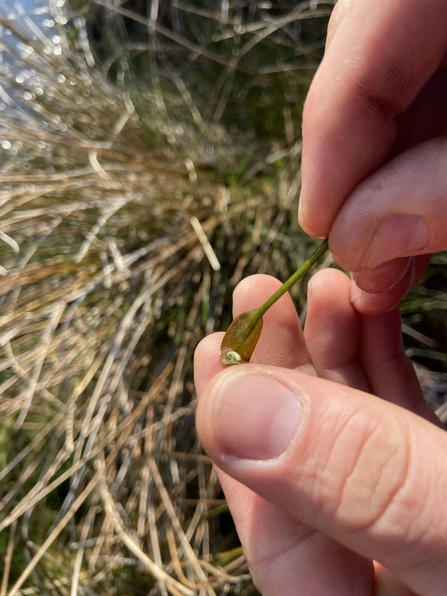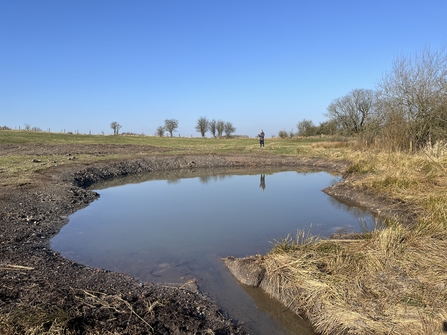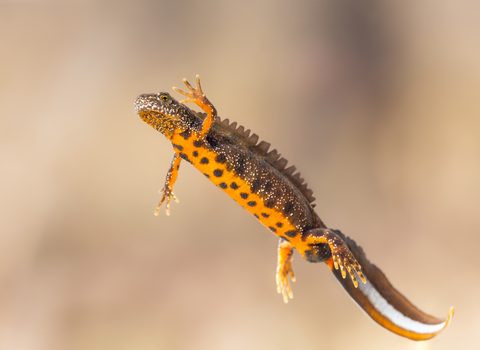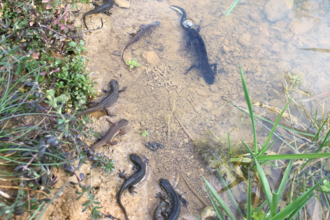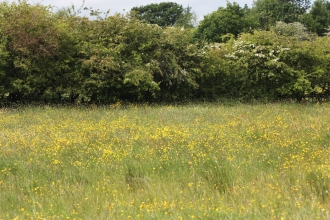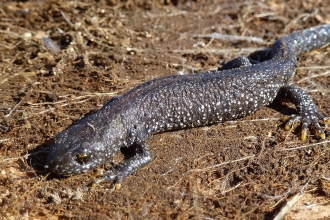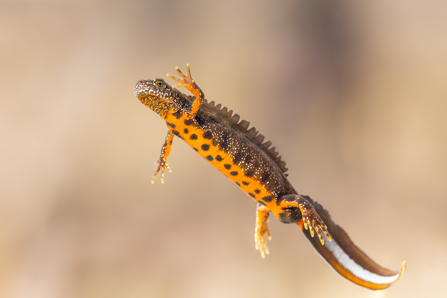
Once a hub of industrial activity, Cutacre Nature Reserve is now bursting with signs of life - and the transformation is nothing short of remarkable.
Just months after seven ponds were restored on site thanks to Natural England’s District Level Licensing Scheme, one of the UK’s most iconic and threatened amphibians, the great crested newt, has not only returned, but is thriving.
Ponds are a vital but often overlooked part of the landscape, supporting a wide range of species including amphibians, invertebrates, birds, and plants. However, over the last century, the UK has lost a significant proportion of its ponds due to agricultural intensification, development, and neglect.


